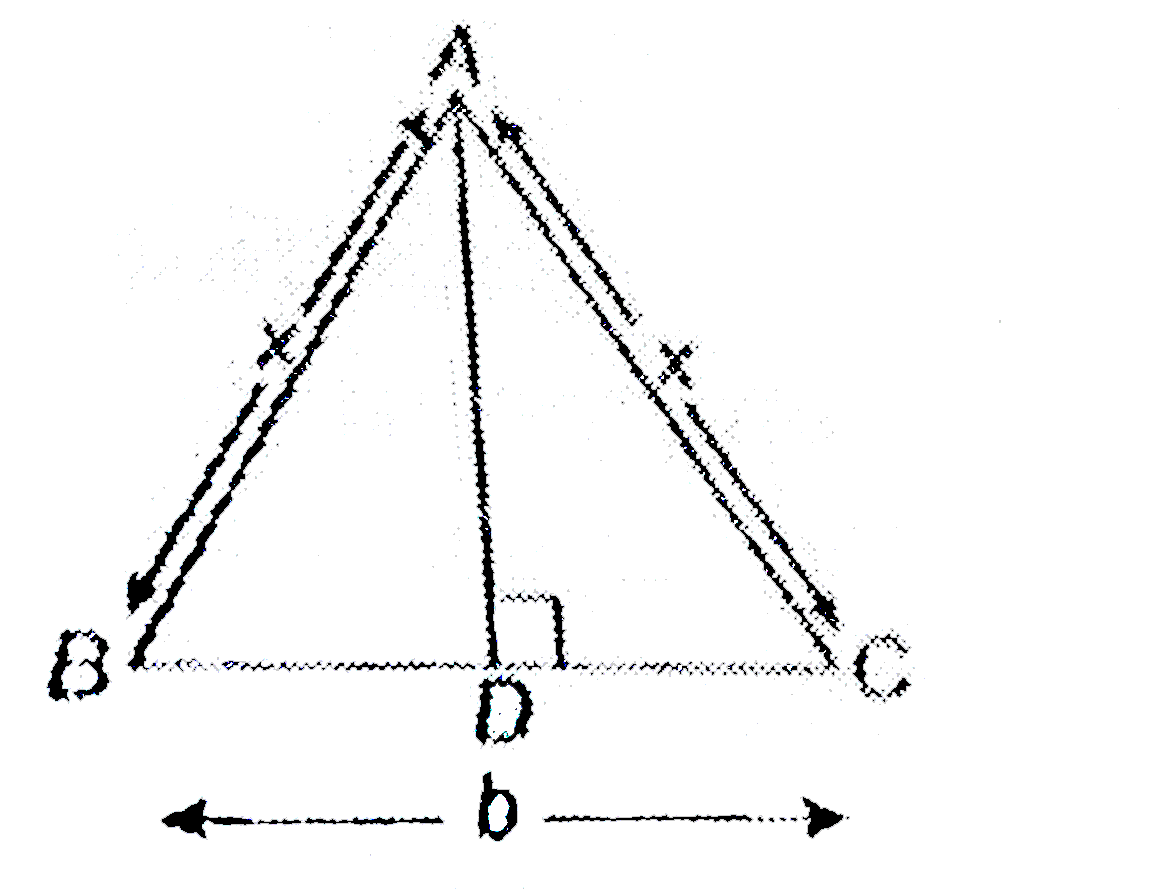The two equal sides of an isosceles triangle with fixed base b are decreasing at the rate of 3 cm per second. How fast is the area decreasing when the two equal sides are equal to the base ?
Let ΔABC be an isosceles triangle when BC is the base of definite length b.
Let each of equal sides of ΔABC be x.

Draw AD⊥BC.
Now, in ΔADC, from Pythagoras theorem, AD=√x2−(b2)2=√x2−b24
∴ area of triangle (A)=12× base×height
=b2√x2−b24
⇒dAdt=12b×122x√x2−b24×dxdt
=xb√4x2−b2dxdt
Given, the two equal sides of triangle are decreasing at the rate of 3m/sec.
⇒dxdt=−3 cm/sec
∴dAdt=−3xb√4x2−b2cm2/sec
when x = b, then dAdt=−3b2√3b2=−√3bcm2/sec
∴ When the equal sides of triangle are equal to its base then its area is decreasing at the rate of √3bcm2/sec.
Topper's Solved these Questions
Similar Questions
The two equal sides of an isosceles triangle with fixed base b are decreasing at the rate of 3 cm per second. How fast is the area decreasing when the two equal sides are equal to the base ?
View SolutionThe two equal sides of an isosceles triangle with fixed base b are decreasing at the rate of 3cm/s. How fast is the area decreasing when the two equal sides are equal to the base?
View Solution
Knowledge Check
- Question 1 - Select One
Each of the two equal sides of an isosceles right triangle is 10 cm long. Its area is
A5√10cm2B50 cm2C10√3cm2D75 cm2 - Question 2 - Select One
The side of an equilateral triangle is increasing at the rate of √3cm/s. How fast is the area increasing, when its side is 6 cm ?
A6 sq cm/sB12 sq cm/sC9 sq cm/sD2√3sqcm/s - Question 3 - Select One
Each of the equal sides of an isosceles triangle is 13 cm and its base is 24 cm. The area of the triangle is
A156 cm2B78 cm2C60 cm2D120 cm2
Theorem 7.2 : Angles opposite to equal sides of an isosceles triangle are equal.
View SolutionShow that in an isosceles triangle, angles opposite to equal sides are equal.
View SolutionEach of equal sides of an isosceles triangle is 13 cm. If the length of base is 24 cm then its area is
View SolutionFind the area of an isosceles triangle whose equal sides are 8 cm each and the third side is 10 cm ?
View SolutionOne of the equal sides of an isosceles triangle is 13 cm and length of the altitude drawn to unequal side is 5 cm . What is the area of the triangle ?
View Solution

